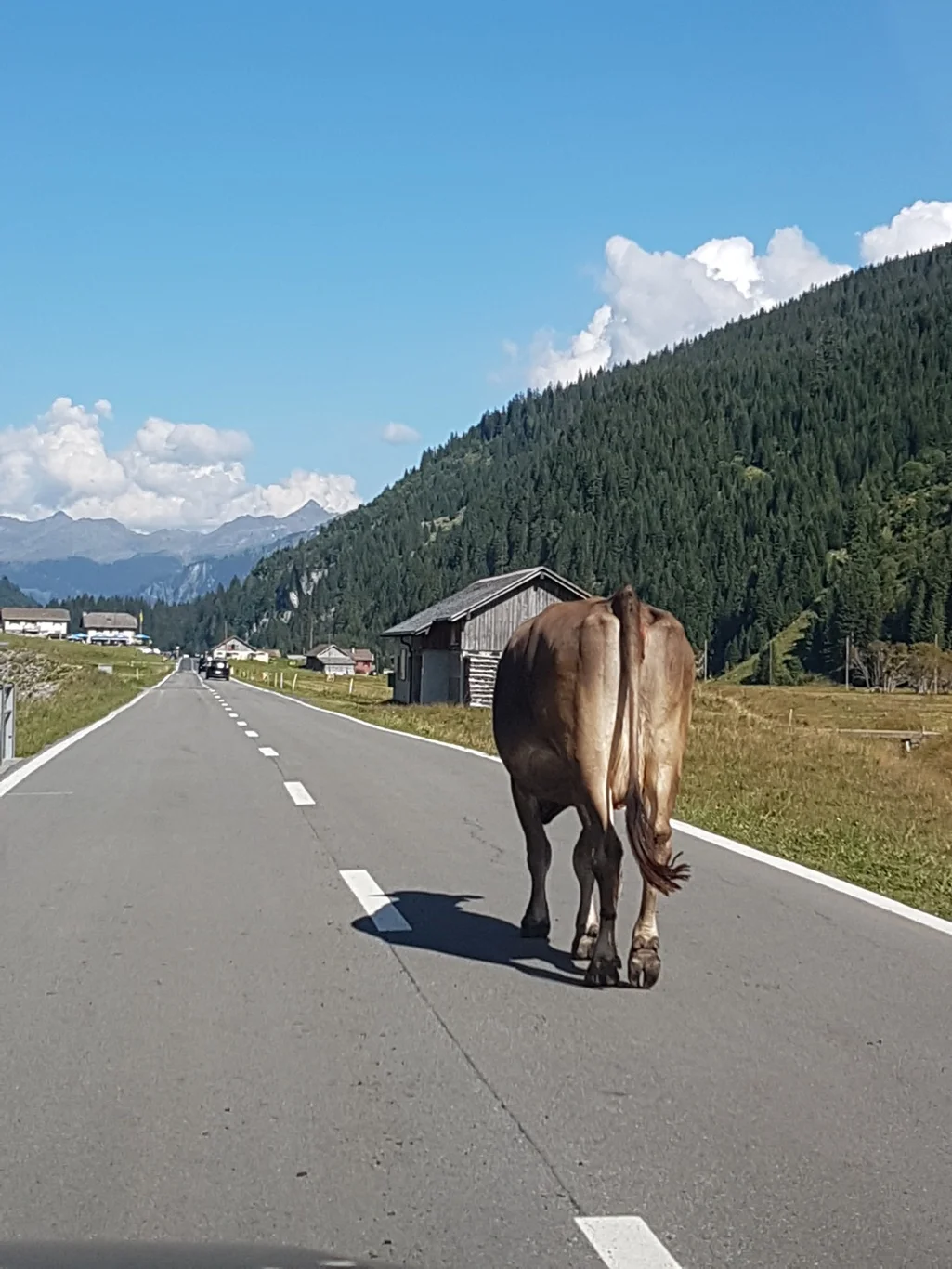Just me and a few waterlilies
Whilst my Hero was busy discussing Joachim Raff with a variety of eminent academics and music scholars, I took myself off to Zürich where I’d seen an exhibition I rather fancied seeing at the Kunsthaus.
Just as all over Switzerland it seemed, the building and roadworks were in full swing and the first challenge was to find my way in!
It’s not the prettiest building from the outside, having already been extended from the original premises several times over. Now, the premises are being extended to a site across the road too and grand plans are already in place for 2020 when a spectacular architectural vision will be realised.
Once inside, I decided to take a look at the permanent collection and headed to the top of the building to work my way down. The gallery was remarkably quiet on this Friday morning.
I found myself in a room with the theme of Nordic Expressionism. Well, though I didn’t recognise that term, I thought I’d recognise the work of the principal name associated with this group of paintings.
But I’d never have guessed this was by Edvard Munch.
I admired the fine drawing of the facial features of this handsome gentleman, Herbert Esche drawn in a completely different and more conventional style from The Scream and other, more expressive works.
The room had other works by Munch, some rather more recognisable, but really, my eye was caught by a large painting hanging on the wall opposite this portrait.
Pride of place had been given to this large canvas by Giovanni Segatini, one of several of his works here, but easily my favourite.
I loved how the goatherd had just fallen asleep in the sunshine
and how the paint had been applied in the style I learn is “divisionist”. Learn something new every day, eh?
I meandered around, wondering if I had time to see everything and deciding that perhaps it would be better to focus on Swiss artists. But then I passed by a familiar work and thought I couldn’t pass up the opportunity to take a closer look, especially since I was by myself in this part of the gallery. We usually walk straight through the Impressionist sections like this, partly because the style is so familiar but also because it tends to be the most crowded area of any gallery.
But how could I resist going into the room where I could sit for a few minutes, alone in the company of two of Monet’s Waterlilies and work by Rodin. Just me and the most amazing artwork - especially that less familiar, darker evening interpretation.
There was a bonus too.
As I turned to leave - well, I couldn’t stay there all day, could I? - on the back wall of the gallery was a Venetian scene to remind me that there was still more to see.
There were a few Van Goghs…
and at least one more surprising work by an artist whose work I thought I’d surely recognise. (but didn’t)
It was in the Chagall collection that I discovered where everyone else was hiding. A film crew and presenter were filming for a Far Eastern TV show and though I felt miffed that I couldn’t see these paintings close up because of their presence, I thought that perhaps I was being unreasonable, given that I had the rest of the place to myself so far!
Anyway, it was time to move on downstairs - it was already lunchtime and I’d not even reached the parts I’d come to see! But these glorious paintings in the downstairs hall drew my attention.
I so admired the style and the beautiful palette of colours. Not much detail and yet so very effective.
There was a collection of several of these huge works, given pride of place in the stairwell and inviting a closer look - was this painted on velvet?
No, but those rich colours and the texture of the paint gave that impression.
All of these works are by Augusto Giacometti, cousin of Giovanni Giacometti, painter of the girl in the blue-white dress on the right hand side of the Alpine Pasture, above. Giovanni was father of the sculptor Alberto Giacometti and his brothers, artist Bruno and architect Diego. The Giacomettis were an artistic bunch, weren’t they?
At last, I was in the Swiss galleries and thinking I’d better move on. I was drawn in by the paintings of groups of women, however and stepped inside to take a closer look.
There are several works in here by Hodler, a Swiss artist who explored parallelism in these groups of women. Interesting!
But the reward came as I went right to the back and through the door into a little wood-panelled room…
Here, a painting by Albert Welti was hanging; a portrait of his parents. So lovely, so well shown in this small section of the gallery where it wasn’t overshadowed by the large works of Hodler.
Loved it.
I couldn’t leave the Swiss paintings without seeing the cow in the cabbage patch, could I?
Spotting a work by Paul Klee on the wall as I passed through the 20th Century gallery, I had to stop and take a closer look too.
I could have spent another hour or more here, looking around and enjoying the peace and quiet, for yes, I was still more or less alone, even if I did see another couple in the Swiss gallery.
I made my way to the entrance for the exhibition I’d come to see and discovered where everyone (except for the film crew) was to be found. And I’ve taken so long getting here, I think I’d better share it in the next post, don’t you?





































